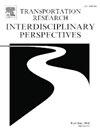Demographic disparities, service efficiency, safety, and user satisfaction in public bus transit system: A survey-based case study in the city of Charlotte, NC
IF 3.9
Q2 TRANSPORTATION
Transportation Research Interdisciplinary Perspectives
Pub Date : 2025-01-01
DOI:10.1016/j.trip.2024.101296
引用次数: 0
Abstract
Public bus transit in the US faces challenges like reduced ridership, rising costs, and service quality concerns, with ridership dropping to 62% of pre-pandemic levels by mid-2022. This research examines service limitations, safety concerns, and attitudes towards technological improvements in Charlotte’s transit system, using survey data from 160 participants collected in 2022 and 2023. The survey included demographic variables such as age, gender, race, income, living area, and bus usage frequency. Statistical analyses, including GLM, POLR, CLM, and Multinomial Ridge Regression, identified significant factors influencing transit use and perceptions. Key findings show that East Charlotte residents and females face limited routes and longer wait times; safety concerns are more prevalent among Black participants and those in East Charlotte; and privacy concerns are higher among infrequent and higher-income bus users. There is a strong preference for technological improvements like real-time tracking apps, especially among infrequent users. This research highlights the need for targeted improvements to enhance service efficiency, safety, and user satisfaction, providing valuable insights for policymakers and transit authorities to create a more inclusive public transportation system.
求助全文
约1分钟内获得全文
求助全文
来源期刊

Transportation Research Interdisciplinary Perspectives
Engineering-Automotive Engineering
CiteScore
12.90
自引率
0.00%
发文量
185
审稿时长
22 weeks
 求助内容:
求助内容: 应助结果提醒方式:
应助结果提醒方式:


